Permits have been issued for the construction of a four-story, 16-unit mixed-use building at 3729-31 Lancaster Avenue in University City, West Philadelphia. The structure, located on the northeast site of the block between Powelton Avenue and North 38th Street, will replace two three-story prewar rowhouses. The building will span a footprint of 5,946 square feet and will contain 15,100 square feet of interior space. Of these, 875 square feet will be allocated to a ground level commercial space. The rest will be divided between 16 residential units, which will average around 889 square feet each. The structure will feature an elevator, space for six bicycles, and full sprinkling. Permits list Patricia V. Pierce and Christine Mueller as the owners, Brett Harman as the design professional, and Tester Construction Group LLC as the contractor. Construction costs are listed at $1.4 million.
The buildings that currently stand at the site are a part of a well-preserved, block-long ensemble. The design is that of a classic Philadelphia mixed-use rowhouse, with a ground-level retail space, a red-brick facade, white stone lintels, and a bracketed cornice. The rowhouses are not particularly architecturally remarkable, but are nevertheless charming and attractive, and it will be somewhat unfortunate to see them go. However, the trade-off is arguably worthwhile (unlike, say, the one at the proposed development at 2043 Fitzwater Street), as the new building will significantly boost the density at the site and will help satisfy the neighborhood’s ever-growing demand for housing.
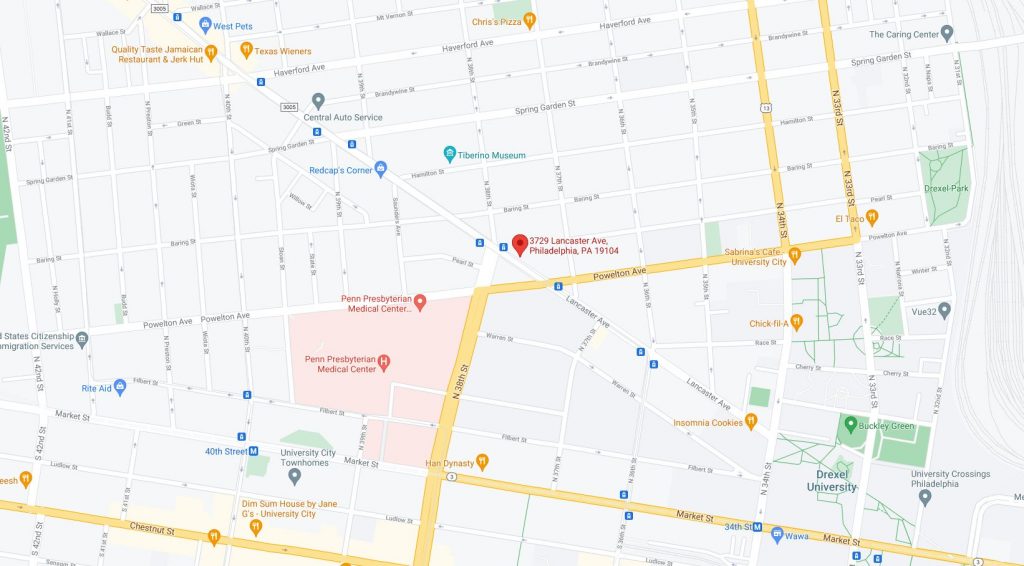
3729-31 Lancaster Avenue. Credit: Google Maps
The sits is located at the northern edge of University City, and may be arguably described as being a part of either Mantua, a neighborhood that stretches to the north, or West Powelton, located to the west. Both neighborhoods primarily consist of prewar residential stock, yet the ongoing construction boom in University City has led to a sharp increase in new developments in both.
The area is well-suited for further increases in density, given its proximity to Drexel University and other institutions in University City, as well as convenient transit access to Center City and beyond via the route 10 trolley, which runs on Lancaster Avenue. To the south, across from a triangular-shaped block with a suburban-style bank branch (itself a fine candidate for redevelopment), rises the massive uCity Square complex, which is currently under construction. Across the street from uCity Square to the west sits the campus of the Penn Presbyterian Medical Center, which, according to our analysis, appears poised for a major expansion in the near future.
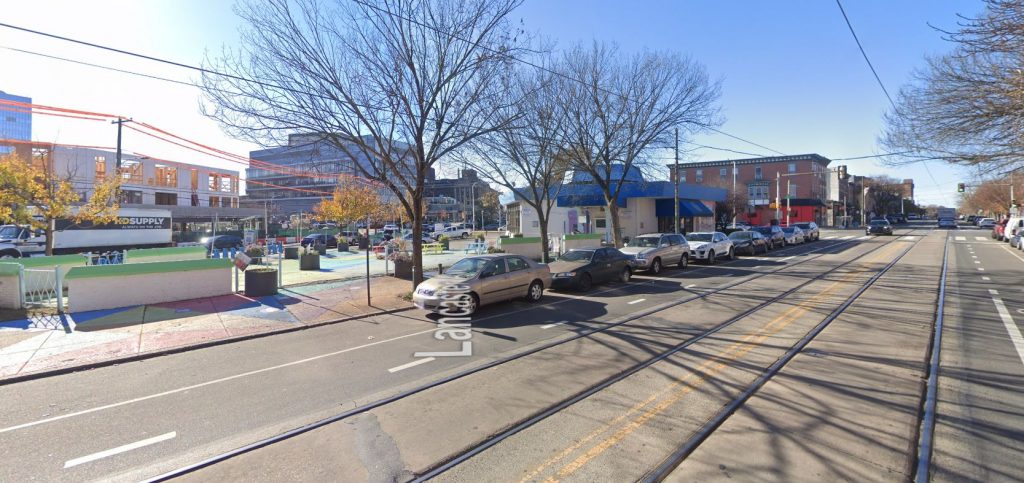
Looking southwest from in front of 3729-31 Lancaster Avenue, with uCitySquare visible in the background on the left and Penn Presbyterian Medical Center on the right. November 2020. Credit: Google Maps

3729-31 Lancaster Avenue. Looking north. Credit: Google Maps
Subscribe to YIMBY’s daily e-mail
Follow YIMBYgram for real-time photo updates
Like YIMBY on Facebook
Follow YIMBY’s Twitter for the latest in YIMBYnews


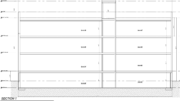
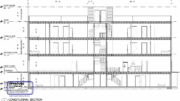
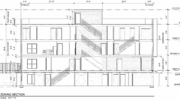
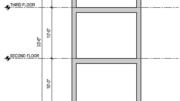
It would be nice to save this block of buildings but they are only 2 stories tall. Furthermore, overbuilding this structure would be very difficult considering you can not not get heavy equipment behind the facade. It sucks but as long as the new design is well done, I see a net positive.
With the permits issued, do you have a render?
One things for sure, there’s no parking at that development.
Situated at 38th & Lancaster, you could walk to 40th & Market for Market-Frankford Line or the opposite direction for the Philadelphia Zoo.
Baring Street is one block north and considering the proposed development of a major residential skyscraper at 3000 Baring Street, you must wonder.
This is not ideal for an adult with a car, but SEPTA trolley route 10 has you covered with departures every 6-10 minutes.
You’ll enjoy a good meal with a nice selection, just a few city blocks into University City.
No parking.
No thanks! 😉
to Kayceeeeee, open the eyeballs. The existing is 3 stories, not 2. It is too bad that we don’t care about preserving these ‘normal’ parts of Philly.
As a near neighbor, this project is literally IMBY. It will put up a 45-foot wall within spitting distance of my back yard destroying any privacy I may have and cutting off lots of light. But my bigger question is, why destroy an intact historic-quality block to gain a few units. (Powelton Village will be proposing a comprehensive historic district that will include this block as an important feature in just a few months.) Over the past decade we have not blocked the development of increased housing: more than 2000 apartments have been built within this RCO (The Summit, The Link, View 32, the soon-to-open Anova – right across the street from me). We’ve worked with the developers to minimize impact and we’ve attempted to keep a historic core intact. With the Link, we allowed the developer to go to a fourth floor set back 20 feet from the street, preserving an entire block of historic facade. It is an accident of zoning that made this parcel CMX-2 and therefore not subject to the Neighborhood Conservation Overlay and it got its extra 7 feet of height and near doubling of allowable units from a pitiful contribution into the affordable housing fund. (This is a whole ‘nother discussion.)
Hi Blaise. I’m sorry that the development is a personal inconvenience for you. Clearly, at YIMBY (literally Yes In My Back Yard), except for extremely rare cases, we do not advocate downzoning. However, I’d also like to do better than just give you a “deal with it” response. In my opinion the neighborhood would benefit from removal of strict height restrictions. In your case, the developer would still be able to fit the same amount of units in a building that is roughly twice as tall yet half as wide. Not only would that be financially beneficial to the builder, letting them offer apartments with more sunlight and better views, but it would also give your backyard the breathing space you’re looking for.
In other words, there are clear alternates to the current scenario: do down (and we do not think that downzoning in such a transit-accessible, high-demand area is advisable in any way), go out (which is what the developer did here and will build right up to your backyard), or go up (letting the builder have their allotted residential space without plopping the building next to your property).
The trade-off is arguably worthwhile? It will help satisfy the neighborhood’s ever-growing demand for housing? NO! NO!!
• The number of apartments in Powelton is not only meeting but exceeding demand. New construction of large/high-rise apartment complexes such as The Anova, The Summit, The Link, View32 and Arrive, along with renovations at The Courts and The Quaker have collectively added over 2,000 one-, two- and three-bedroom units.
• The only additional housing needed at this point is AFFORDABLE units, and aging-in-place housing for older Powelton residents. We are losing lower-income, culturally diverse neighbors as older housing stock is demolished. Yes, a developer can pay into the City’s housing fund, but that is not the same as keeping those families in their homes.
• The historic preservation of the 3700 block of Lancaster should not be considered as being anti-development. It is a long-term investment in the future of the Lancaster corridor in terms of its unique character. A model can be seen in how the south-side of 3600 block of Lancaster was incorporated into The Link.
“We are losing lower-income, culturally diverse neighbors as older housing stock is demolished”
Strict height limits hold a lot of blame for that. Rather than protecting neighborhoods, they contribute to their destruction. With a low height limit, developers are forced to build out rather than up, gobbling up massive amounts of space and, sometimes, existing prewar housing in the process. Without these height caps, developers would be able to place the same amount of units on smaller footprints, preserving adjacent buildings in the process.
The only other option is to restrict new housing altogether, which is what they did in San Francisco and shot themselves in the foot in the process as their housing has become extremely unaffordable to all but the very rich.
As of affordable housing, a natural economic response to basic supply and demand issues is more appropriate than an artificial, bloated and hard-to-get-into subsidy system. If I sold cabbages and flooded the market with cabbages, their price would plummet. The same applies for apartments. Let developers build as many of them as the market actually needs and they will start building budget housing because they respond to the market and are not irrational enough to just build a million ultra-luxury units and hope they all sell for top-market prices.
Powelton is losing lower-income, culturally diverse neighbors because the rents in the new high-rise buildings are too expensive! The ANOVA is being designed to attract young professionals from the Science Center, the universities and the hospitals. A working-class family with two children would have to pay more than $4,000/month to live there (unless they all squeeze into a 360 sq ft studio apartment for $1,800/month). I doubt the market would cause the ANOVA to bring the rent down to $1,000/month. We’re not talking about cabbages.
As I mentioned before, if we allowed developers to build up rather than out, they would not need to eat up as much ground space, sparing adjacent rowhouses occupied by the lower-income families you’re talking about. For the families that own their properties (likely purchased years/decades ago when local real estate was not as desirable and thus very cheap), an increase in their property value would be a windfall, which is especially crucial since decades of discrimination prevented many local minority families from amassing generational wealth.
Please note that the city has already allowed developers in Powelton to build up rather than out: the Summit is 24 storeys and the Arrive is 29 storeys. It hasn’t done a thing for sparing rowhouses and two- and three-storey single family homes occupied by lower-income families. The increase in the value of our homes is not a windfall unless we all want to sell and move away from lifelong family and friends? Community is not commodity.
Gotta say, targeting the bank for redevelopment is a bad look. Literally is a public square and community center that does market shares, food distribution, has a community fridge, and more. I’m with y’all on housing but it could be good to yknow, check out these places in person because we’re not going to win folks over like that.